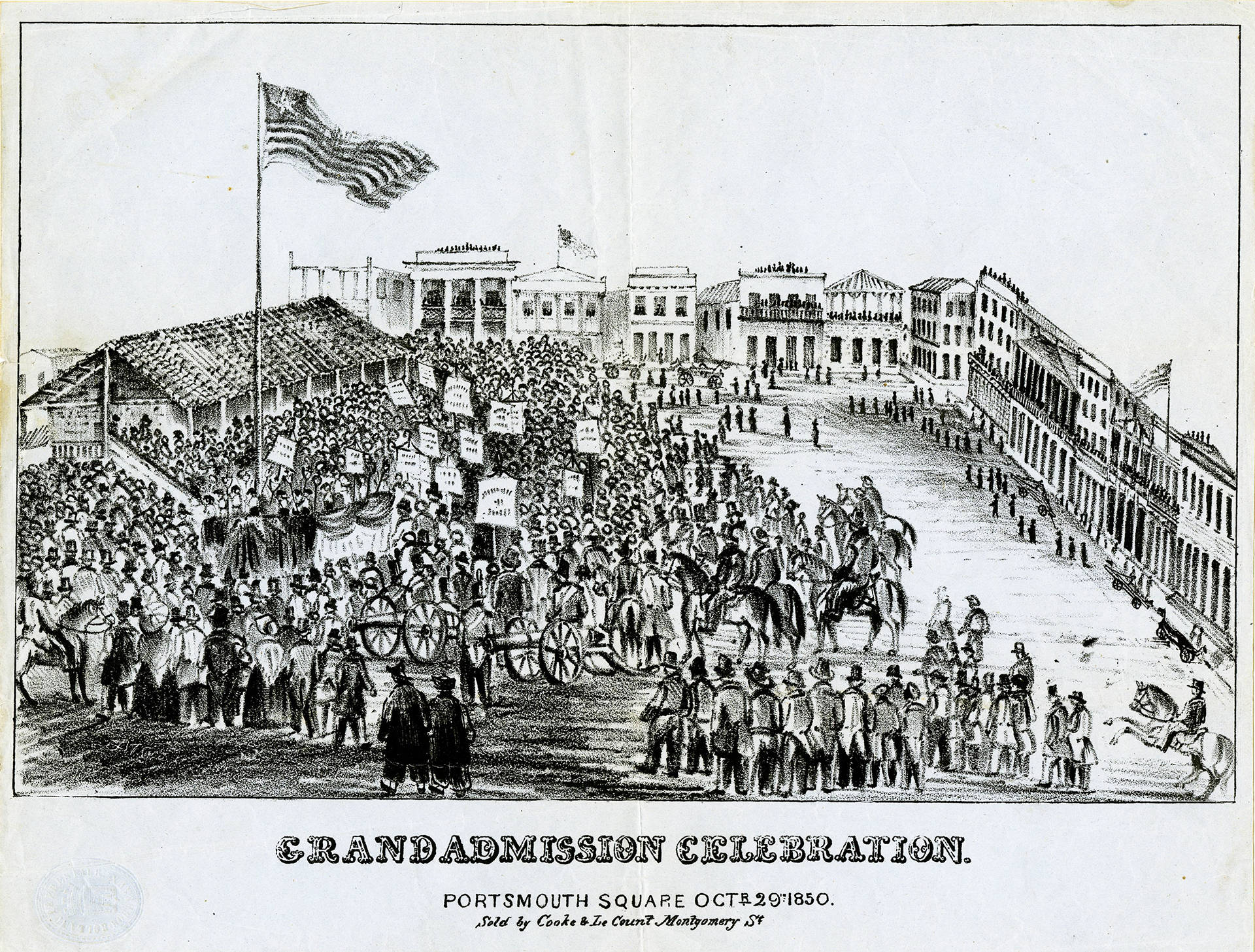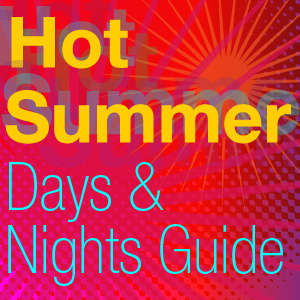In April of last year, the normally business-friendly Santa Rosa City Council did something unusual: it voted to eliminate part of Mendocino Avenue — which since the mid-1960s had bisected the city’s central plaza, Old Courthouse Square, with heavy traffic — and decided to replace it with grass, benches, public art and open space. The project’s vision veers even further from car-first: “Reunifying Courthouse Square is about building an urban park and a gathering space in the heart of Santa Rosa,” reads the master plan. “We are not building a parking lot.”
It might be a while before Santa Rosa turns into Greenwich Village. But the ideas reflected by the Santa Rosa City Council run deep; historically, culturally, and democratically. At a time when profits are valued over social concerns, and the internet acts like a vacuum cleaner on people’s brains, the concepts of public gathering, quiet contemplation, simple play, and moving through fresh air become more and more radical.
Thankfully, the Bay Area has a nice array of public squares in which to sit, think, and stroll—essentially, to challenge yourself to do “nothing.” What is nothing? How much nothing is it possible to do? (Answer: nothing is nothing. Go sit in a park and chew on it.) A wonderful amount of said nothing may be done at one or all of these epic public squares. Sure, have some ice cream in Healdsburg or pizza in Santa Rosa if you want, but also consider that it’s possible to enjoy public space, reimagine the city and appreciate your fellow individuals, all without spending a dime.
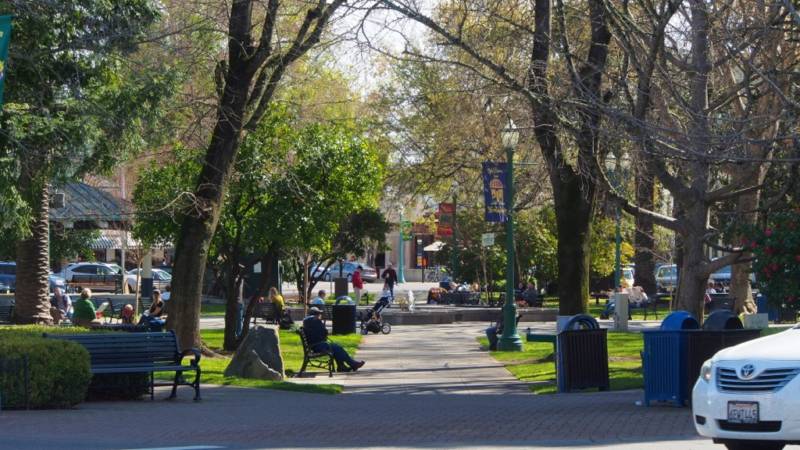
Healdsburg Plaza
Healdsburg
Travel and Leisure magazine recently named Healdsburg’s plaza one of America’s Most Beautiful Town Squares. That may be because, while some North Americans still have a hard time with relaxation, immigrants from former Spanish colonial cities can show us proper square lounging, picnicking, and strolling. In Mexico, particularly, people have skillfully taken up the ways of long-ago European invaders, who brought platz and plaza with them (think Puebla or Oaxaca). In Healdsburg, residents from many different places and their descendants can be seen meditating, philosophizing, socializing, and watching their children tire themselves out quite often, in ways uptight Americans haven’t quite caught onto yet. (Fellow uptight Americans, we must put our shoulder to the wheel on this one. Let’s plaza better!)
Healdsburg Plaza has a secret, too, according to journalist Jane Jacobs: “Good small parks typically have a place somewhere within them commonly understood to be the center.” Although a visitor may never consciously notice the gazebo, she says, it creates a circle around itself, which often incongruously doubles as “a circular arena, a theater in the round, and that is how it is used, with complete confusion as to who are spectators and who are the show.” Unconscious, controlled chaos: not available online.
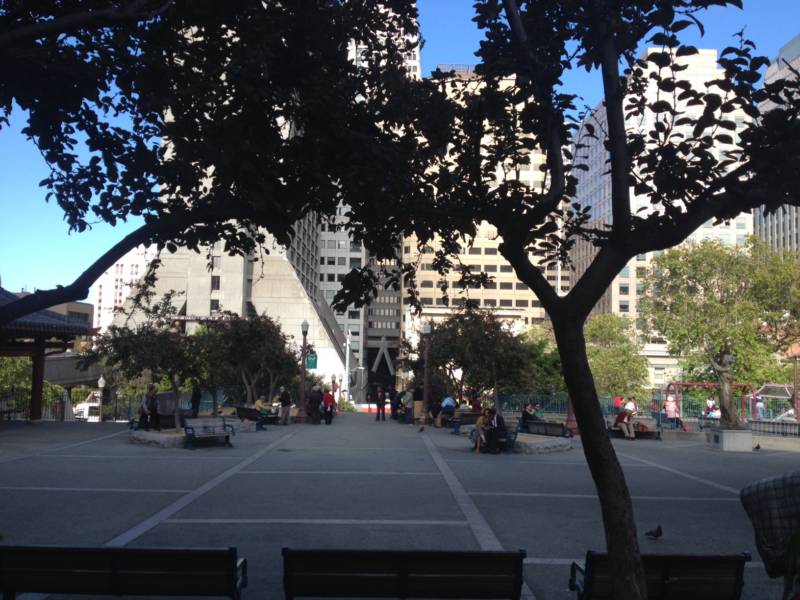
Portsmouth Square
San Francisco
Portsmouth Square is the heart of Chinatown and the historical root of San Francisco. It’s also alive night and day, a quality Jane Jacobs emphasizes particularly in The Death and The Life of Great American Cities: “The basic requisite (for the health and safety of a given district) is a substantial quantity of stores and other public places sprinkled along the sidewalks of a district; enterprises and public places that are used by evening and night must be among them especially.” More symbolically, the square is also watched over by the Goddess of Democracy, a replica of the original which stood in Tiananmen Square — another crucial public square. Portsmouth’s multi-level, multicultural square even has a little skyway, unique in the region, which connects it to the Chinese Cultural Center. First known as Yerba Buena Plaza (which I can personally date to 1836, but which may have been there even longer), Portsmouth Square is awash in historical markers: one in memorial to Robert Louis Stevenson, one for the first U.S. flag hoisted in San Francisco, and one honoring the very first California public school, opened on the square’s southwest corner.
As has been noted many times, people play games here. A recent visit confirmed this: throughout the park were a dozen or so knots of people gathered to play cards. Upturned cardboard boxes served as tables, and plastic juice bottles (mango a popular choice) held down the discard pile. Players seemed to have brought camp chairs, but many also perched on low cement walls. One group of intense young white people ran around strafing one another with paint guns, screaming “I got you!” And of course, women practiced tai chi. Is there any organized public activity with so many contradictions? (The group I saw was particularly graceful and synchronized, but I get it: if it’s your mom in there, it can look awkward. On the other hand, tai chi is slowed down kung fu, so it has some badass characteristics as well. And staying healthy, while connecting with your neighbors, for free? That’s downright activist. It’s like, cool, yet also the definition of uncool. But I digress. If you think you’ll need to sit and ponder all this, I suggest the pedestrian walkway’s large benches, which are sometimes wind-sheltered, and are often surprisingly quiet and calm.)
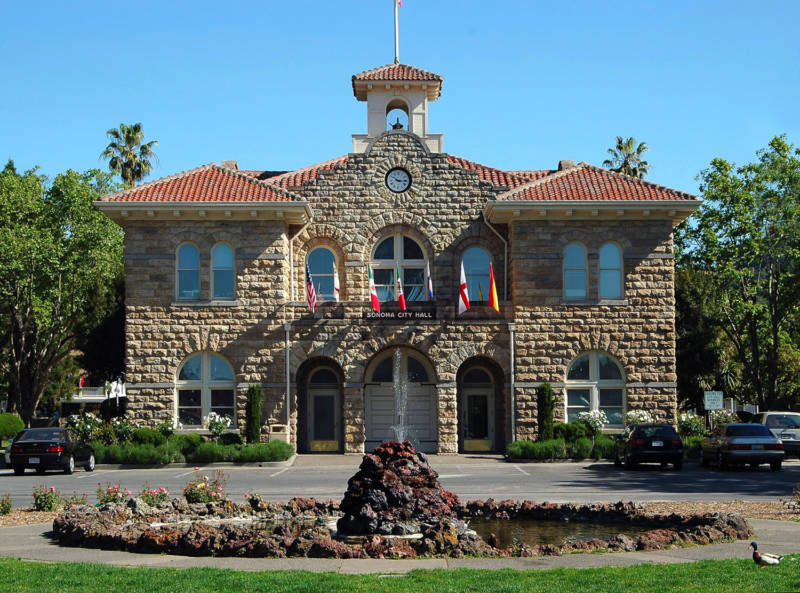
Sonoma Plaza
Sonoma
It’s hyper-gentrified, yes, but this gorgeous square is a wine country icon. Some critics have complained that it’s too big. At eight acres, it’s the biggest public square in the state. (Critics can go to Healdsburg if that’s their issue — it’s little over one acre.) Sonoma’s public square is surrounded by amazing old buildings, contains several different fountains, and has a solid birding community, who offer a self-guided tree tour. It’s a lot like Healdsburg’s plaza, except Sonoma’s plaza hosts the Sonoma International Film Festival at the Sebastiani Theater, right on the square! Yeah! (And Healdsburg thinks it’s so great with its fancy magazine awards.)
Seriously though, it can be a little difficult to be a true buy-nothing meanderer here, because the town of Sonoma is really good at separating fools from their money. The square is: a) enchanting and b) incredibly expensive. Good luck not blowing your paycheck out there.
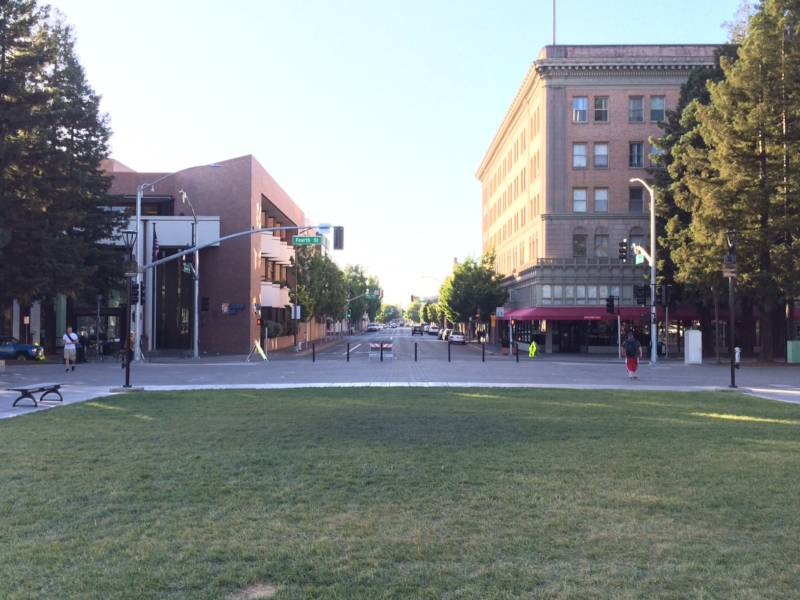
Courthouse Square
Santa Rosa
Town squares in California are mostly historic, so by their nature they’re a collision of old and new. Santa Rosa’s newly and wholeheartedly reunited Courthouse Square is no exception. On a recent afternoon, few people used the square, although ten or so youngish visitors, traveling in pods of two or three, seemed to be playing an app form of geocaching. It’s very flat, as disgruntled locals have pointed out. It’s small, and with the Ruth Asawa fountain not yet re-installed, a bunch of mature trees removed, and a lot of level cement and grass, it feels odd, for sure. But the city is behind the square 100 percent, which is good, and its leaders seem to have plans for the future.
At the recent grand opening ceremony, Mayor Chris Coursey pointed out that the project and its singular design didn’t just spring out of nowhere. “This has been a community effort for a quarter of a century,” he told the crowd, “and it needs to be recognized as a community accomplishment.” Personally, I notice the square is midway between the movie theater and a new, huge (like Midwest-huge) pizza restaurant, and figure that in addition to everything else, Santa Rosa teenagers now have a reliable, simple, potentially cheap, and seriously fun date night all mapped out. Maybe that isn’t activism, exactly, but making central spaces public for older kids points right at a healthy city, if you ask me. No need to take my word for it, though: local historian Gaye LeBaron spoke at the opening ceremonies as well, and pointed out that Julio Carrillo, the son of Spanish settlers and the city’s “first citizen” (except for, you know, the Bitakomtara Pomo) who helped plot out the city in the 1800s, thought there “Should be a plaza in the middle, in the Spanish tradition, and ‘A place to promenade on summer Saturday evenings.’”
